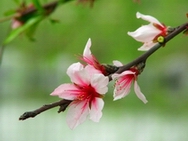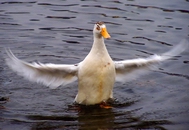 Listen to Shirley Singing the Poem in Chinese Sep 12,2012
Listen to Shirley Singing the Poem in Chinese Sep 12,2012 Listen to Shirley Singing the Poem in English Sep 12,2012
Listen to Shirley Singing the Poem in English Sep 12,2012 Listen to Shirley Singing the Poem in Chinese & English Aug 6,2012
Listen to Shirley Singing the Poem in Chinese & English Aug 6,2012 Listen to Shirley Introducing & Explaining the Poem Aug.4,2012
Listen to Shirley Introducing & Explaining the Poem Aug.4,2012  Follow Shirley to Read the Poem & Chinese Characters Aug.4,2012
Follow Shirley to Read the Poem & Chinese Characters Aug.4,2012  Learn the Meaning of the Poem with Shirley Together
Learn the Meaning of the Poem with Shirley Together Shirley Created Picture for the Poem Sep 21, 2012
Shirley Created Picture for the Poem Sep 21, 2012 Shirley Created Picture for the Poem Jan 1, 2012
Shirley Created Picture for the Poem Jan 1, 2012 Shirley Created Picture for the Poem Sep 9, 2007
Shirley Created Picture for the Poem Sep 9, 2007 
Hi, friends, today, I would like to introduce a new Chinese classical poem
Hui Chong Chun Jiang Wan Jing? Inscription on Huichong’s Painting " The Evening Scene on a Spring River by Su Shi(1037-1101).
About the PoetSu Shi(1037-1101) Su Shi
苏轼 Sū Shì(1037-1101) is recognized as having attained highest level of achievement in literature in the Song Dynasty for his outstanding contribution to poetry, lyrics and essays. He was also a great calligraphist and a famous artist.
Su Shi was from Mei Shan, Sichuan Province. He had a very good educational background and he, his father and his younger brother were known as the San (three) Su.
He was a successful candidate in the highest imperial examination and achieved much in his many official positions.
As a poet, his fame and reputation were similar to that of Huang Tingjian and together they were known as "Su and Huang".
As a lyricist, Su Shi attained the highest level of achievement in the Northern Song (960 – 1126) with regard to both content and form. He was the originator of the genre of poetry known as “Bold and Unconstrained.” He and the other great poet, Xin Qiji of the Southern Song (1126 – 1179), were known as “Su and Xin.”
As an essayist, Su Shi was very good at writing dissertations. He is one of the Eight Great Masters of the Tang and Song. He had a same good reputation as Ou Yangxiu and together they were known as "Ou and Su"
As a calligraphist, he was famous for his running hand and regular script. As an artist, his favorite subject was bamboos.
Su Shi was not only famous for writing, painting and handwriting, but he also had his own theories about literature and art. He emphasized that literature should be a unique, expressive force and have artistic value.
He has left more than 4000 poems, about 340 lyrics and many essays to the world.
This poem was inscribed on a painting by the monk and artist Hui Chong, In a few short lines it paints a beautiful picture of the early spring scenery south of the Yangtze River.
The practice of inscribing poems on paintings started in the Song Dynasty, and these inscribed poems are known as Ti Hua Shi -- Poems on paintings.
I am sure that in China, instead of remembering the title of the poem, most of people remember the most famous line from the poem: "Chun jian shui nuan ya xian zhi -- ducks are the first to know when the spring river water gets warm.”
Enjoy the Poem with Shirley Together First line:
竹外桃花三两枝 Zhú wài táohuā sān liǎng zhī - Beyond the bamboo grove there're a few twigs of peach blossom.
In this simple line we learn:
-- The bamboo grove is sparse, therefore, we are able to see the peach blossoms;
-- It is early in the season, otherwise, the peach blossom would be in full bloom.
-- The green or yellow bamboo and the pink peach blossom show us that spring is on its way.
Second line:
春江水暖鸭先知 chūn jiāng shuǐnuǎn yā xiān zhī-- When the spring river water gets warm, ducks know it first.
Third line:
蒌蒿满地芦芽短 Lóuhāo mǎn dì lúyá duǎn -- Wormwood herb is everywhere, the buds of reeds are just growing.
Fourth line:
正是河豚欲上时 zhèng shì hétún yù shàng shí-- It is the time when globefish will swim upstream (in another version: It is the time when the globefish will be in the market).
After writing about the spring scenery in the first three lines, the last line describes some of the association of ideas of the poet.
It is said that the people who live along the Yangtze usually cook globefish with wormwood, reed buds and Chinese cabbage, so the poet just thought of this naturally.
The whole of the poem is full of the beautiful breath of life.
I have enjoyed this poem since I first read it and so I wrote a piece of music to go with it in 2005 and created two paintings for it in 2007 and 2012, and hope my effort will be of some help with you to learn Chinese language and culture.
Main Meaning of the Poem Beyond the bamboo grove there are few twigs of peach blossoms,
The spring river water gets warm, ducks know it first.
Wormwood herb is everywhere,the buds of reeds just grow.
It is the time when globefish swam upstream.
Chinese Characters & Pronunciation:
You can click on any Chinese Character to open the New Character Board and see its Chinese pinyin, meaning, pronunciation and follow my reading, you can also click on the links to enter the Painting Column, to see more paintings and art notes that I wrote for the poem.
惠崇春江晚景 -- Huì Chóng Chūn Jiāng Wǎn Jǐng
苏轼 -- Sū Shì
竹外桃花三两枝 -- Zhú wài táohuā sān liǎng zhī,
春江水暖鸭先知 -- chūn jiāng shuǐ nuǎn yā xiān zhī。
蒌蒿满地芦芽短 -- Lóugāo mǎn dì lúyá duǎn,
正是河豚欲上时 -- zhèng shì hétún yù shàng shí。
 If you have any questions, comments and suggestions, please write to shirley@ebridge.cn , or shirleyz004@yahoo.com, You are welcome.
If you have any questions, comments and suggestions, please write to shirley@ebridge.cn , or shirleyz004@yahoo.com, You are welcome.
Shirley ZhangWritten, Sung, Translated & Recorded Sep 24, 2012/ August 4, 2012/ Jan 1, 2012/ Sep 16, 2007/ Feb 25, 2005.
 Listen to Shirley Singing the Poem in Chinese Sep 12,2012
Listen to Shirley Singing the Poem in Chinese Sep 12,2012 Listen to Shirley Singing the Poem in English Sep 12,2012
Listen to Shirley Singing the Poem in English Sep 12,2012 Listen to Shirley Singing the Poem in Chinese & English Aug 6,2012
Listen to Shirley Singing the Poem in Chinese & English Aug 6,2012 Listen to Shirley Introducing & Explaining the Poem Aug.4,2012
Listen to Shirley Introducing & Explaining the Poem Aug.4,2012  Follow Shirley to Read the Poem & Chinese Characters Aug.4,2012
Follow Shirley to Read the Poem & Chinese Characters Aug.4,2012  Learn the Meaning of the Poem with Shirley Together
Learn the Meaning of the Poem with Shirley Together Shirley Created Picture for the Poem Sep 21, 2012
Shirley Created Picture for the Poem Sep 21, 2012 Shirley Created Picture for the Poem Jan 1, 2012
Shirley Created Picture for the Poem Jan 1, 2012 Shirley Created Picture for the Poem Sep 9, 2007
Shirley Created Picture for the Poem Sep 9, 2007  Hi, friends, today, I would like to introduce a new Chinese classical poem Hui Chong Chun Jiang Wan Jing? Inscription on Huichong’s Painting " The Evening Scene on a Spring River by Su Shi(1037-1101).
Hi, friends, today, I would like to introduce a new Chinese classical poem Hui Chong Chun Jiang Wan Jing? Inscription on Huichong’s Painting " The Evening Scene on a Spring River by Su Shi(1037-1101). If you have any questions, comments and suggestions, please write to shirley@ebridge.cn , or shirleyz004@yahoo.com, You are welcome.
If you have any questions, comments and suggestions, please write to shirley@ebridge.cn , or shirleyz004@yahoo.com, You are welcome.